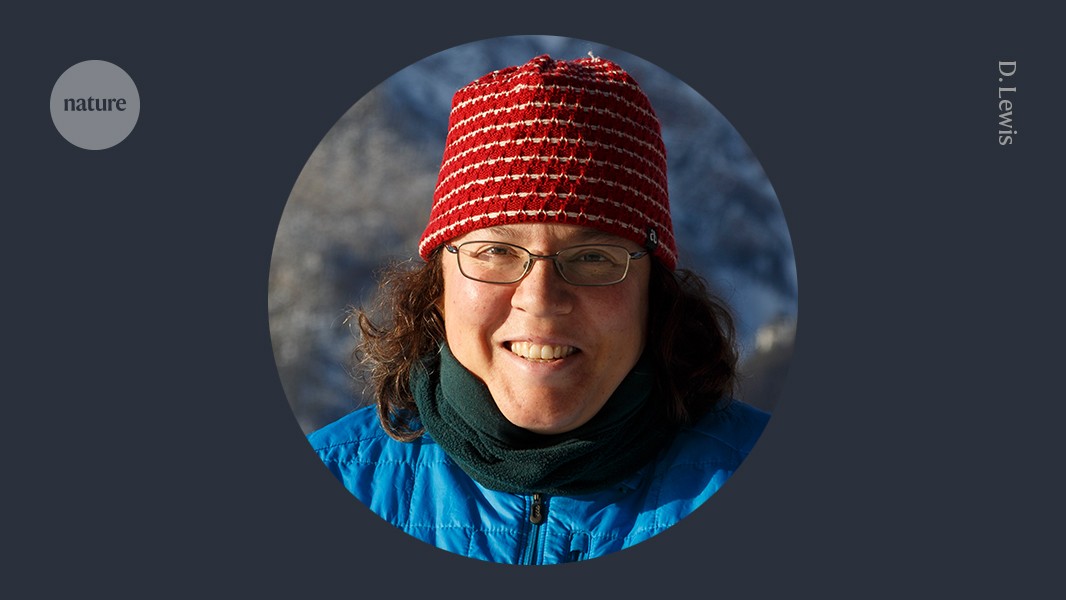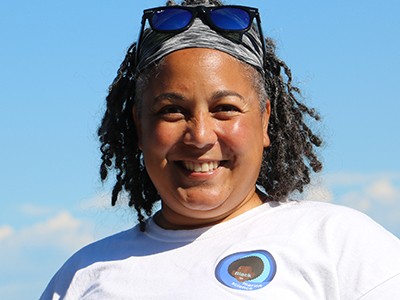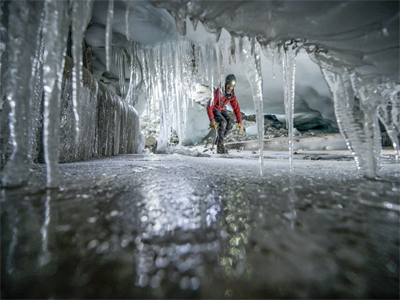One year ago, Maya Bhatia, a biogeochemist at the University of Alberta in Edmonton, Canada, stepped out of a helicopter onto a glacier near Grise Fiord (Aujuittuq) in the Canadian Arctic to collect a sample of melt water. To the horror of her student and the pilot, she slipped into a stream and was swept into a moulin, a vertical shaft in the glacier. There was no way to save her. Bhatia left behind her husband and two young children.
As a geographer-turned-writer who has visited the Arctic, I know all too well the dangers of doing fieldwork in remote places. While researching environmental change, I’ve had to traverse glaciers, scare off grizzly bears and take measurements from fast-flowing rivers. In my opinion, institutions need to do much more to prepare field researchers for the unexpected. As I’ve experienced, thorough training and clear leadership can and will save lives.
Far from emergency services and without mobile-phone coverage, even experienced researchers can be caught out. For example, in August 2020, glaciologist Konrad Steffen died after falling into a crevasse on the Greenland ice sheet where he’d worked for more than 30 years. Wilderness travel brings dangers. In 2021, a helicopter accident east of Resolute in Nunavut, Canada, killed the crew and a biologist who had just finished surveying polar bears. In 2011, Martin Bergmann, the head of Canada’s Polar Continental Shelf Program, died in a plane crash.
Ecologists: don’t lose touch with the joy of fieldwork
Travel accidents are out of our hands, but much can be done to mitigate fieldwork risks. Safety courses are a good starting point, but not enough. As a graduate student studying Arctic glacier hydrology in the 2000s, it wasn’t until I arrived at my field site that I was briefed on how to travel safely across the ice and rescue someone from a crevasse. It made me more aware of these hazards, but I wasn’t confident that I would be able to save someone.
The next year, I pushed my supervisor to invest in a more in-depth course in crevasse rescue with a certified mountain guide. After going over the basics, we practised the techniques, such as setting anchors and using pulleys to drag people out of the snow. I also received training in wilderness first aid and firearms handling, for possible encounters with aggressive polar bears.
When I became a tenure-track professor in 2007 at the University of Lethbridge in Canada, and my fieldwork shifted to the Rocky Mountains, I completed training in all-terrain vehicle handling and avalanche rescue. My university required leaders of fieldwork trips like me to identify hazards and submit a plan outlining how we would deal with them. This included what to do in case of an accident or emergency, and how to avoid these situations in the first place. Although this is a good idea, it can prepare you for only a limited set of foreseen events.
All of my training was helpful during an emergency that a graduate student and I had in 2008 on the Belcher Glacier (Devon Island ice cap). We were cut off from our camp by rivers of slush, and my student got soaked to the waist while trying to cross one of them. It was an unexpected situation that I’m not sure I handled well. We ended up being evacuated by helicopter back to the research base in Resolute.
Science on the edge: how extreme outdoor skills enhanced our fieldwork
It was a reminder that not all things go as planned, and that you can’t control the environment, only your actions. That’s why I think that, in addition to safety training, the best way to avoid mishaps is to ensure that the principal investigator running the team of fieldworkers has completed leadership training for emergency situations.
After Bhatia’s death, the University of Alberta has, rightly, taken a closer look at fieldwork practices and responsibilities. The university now expects researchers to enact a series of scenarios that they might encounter in the field, including evaluating hazards, assessing incidents and responding to emergencies. This is a good first step. One factor in Bhatia’s tragic death was that she wasn’t wearing crampons or a harness tied to a rope, which might have saved her life. Her husband also noted that she was working long days and experiencing research pressures at the time.
The possibility of hiring guides for Arctic scientists is being discussed. But, in my view, this shifts too much responsibility away from the researchers and onto the guides, which might make fieldworkers less careful.
A better option is for universities and other institutions to prepare researchers more intensively for fieldwork — including nominating and training the team’s supervisor to be an effective leader in a crisis.
It’s crucial that expeditions are led by someone who can model appropriate behaviour, enforce safety protocols and make quick, good decisions if things start going sideways. They should have a handle on their colleagues’ well-being and group dynamics, and be able to deal with tricky situations quickly and effectively. Researchers who are too tired or stressed to operate safely should be supported, and trips to collect samples should be deferred or cancelled, rather than putting people in harms way.
Fieldwork will never be accident-free. But we need it — to validate remote-sensing research, to collect samples or to see the environment in action, something you can’t do from afar. And, with adequate training, we can make fieldwork much safer. Bhatia was an enthusiastic researcher at the top of her game before the tragedy. She didn’t deserve what happened to her; we must learn from this accident so that it doesn’t happen again.
Competing Interests
The author declares no competing interests.




